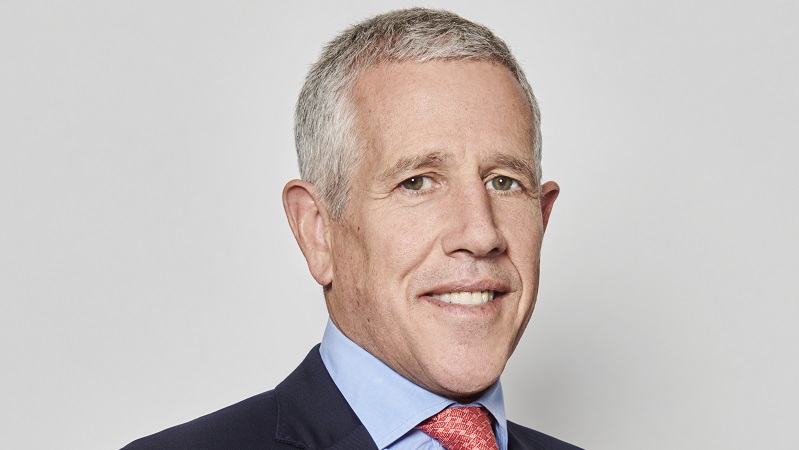The hedge fund strategy
Global macro is one of the hardest investment strategies to implement or at least to get right. Paul Jeffries explains how hedge funds go about running global macro funds…
Broadly speaking, global macro managers take risk across different geographies and asset classes and seek to benefit from global macroeconomic policies.
Taking a top-down approach to investing, seeking mispricing wherever it exists, they also tend to operate in the most liquid markets, but access them through a variety of instruments, some simple and some extremely complex. And they look for asymmetric trades, seeking to limit the downside and benefit from significant upside.
The aim, as with all hedge funds, is to generate attractive risk-adjusted absolute returns in all market conditions. What makes them stand out is that they go about it in their own very distinct fashion.
That they operate in the most liquid markets should make them an ideal Ucits vehicle, but the difference in flexibility between an offshore and a Ucits fund makes a meaningful difference.
Remember that global macro is the most all-encompassing of strategies and its flexibility is underpinned by its ability to undertake complex and longer duration (or lower liquidity) positions, higher concentrations and leverage.
A Ucits vehicle on the other hand views liquidity, regulation and diversification (as well as capped leverage) as more important pillars to its broader investor group – a standardisation process that has many benefits but prevents it from enjoying the ultimate flexibility (and thus rewards) of a hedge fund, especially one with a global macro approach.
Systematic management
There are two distinct types of global macro managers, systematic and discretionary. Systematic management uses quantitative computer-driven models to generate buy and sell signals and can be broken down into trend and non-trend following types. Investment decisions are made on macroeconomic and financial data, such as growth, inflation, fiscal and monetary policy, company earnings, bond yields, and so on, all of which are analysed quantitatively and result in systematic trading signals and investment positions.
Global macro is truly agnostic and hunts returns wherever they can be found irrespective of asset class or instrument.
Paul Jeffries, head of UK institutional business, Permal Group
This approach has historically been characteristic of global tactical asset allocation firms, which generally focus more on relative value opportunities and mean-reversion trades. On the other hand, systematic technical managers usually base investment decisions on price patterns, which are also processed quantitatively and which often result in trend-following or momentum-based trades. This is typical of CTAs or managed futures programmes.
The discretionary approach
Discretionary managers on the other hand are fundamentals-driven managers; they analyse a broad range of economic and financial data, formulate investment theses and implement their trades. Although they too use quantitative tools and technical charts to support their analysis, this does not constitute the defining core of the investment process. While most discretionary managers can put on both trend-following and relative value trades, their proportion and frequency depend on specific market conditions and the idiosyncrasies of individual firms.
Understanding the mechanics behind various macroeconomic policies, and then how best to express an idea to make money by using any mix of investment instruments available, tends to mean macro funds have large teams. This includes analysts, economists, highly qualified academics, traders, portfolio managers, technicians, programmers, lawyers – the list goes on. This is what makes it very difficult to start up a macro fund with little backing.
In addition, global macro as a strategy has moved forward since the ’80s and ’90s. Funds no longer take big concentrated positions, and far greater weight is placed on risk thresholds. Today the high degree of asset class correlation and connectivity across the globe makes such investments less appropriate; instead, they are running thousands of trades across the investment spectrum.
Unlike many other hedge fund strategies, which are more limited by their mandates or asset classes, global macro is truly agnostic and hunts returns wherever they can be found irrespective of asset class or instrument. It is this flexibility that makes it the most difficult strategy to replicate in any standardised form, be it Ucits or index, and yet makes it so enticing for the ultimate investor.
On the other hand … The Ucits strategy
… while Andrew Ford outlines Standard Life’s pension scheme-driven Ucits approach that looks to drive down risk while maintaining long-term returns.
Standard Life Investments’ Global Absolute Return Strategies (GARS) Fund was set up to address a significant funding deficit in the parent company’s staff pension scheme. By 2005 it had become clear that a traditional balanced approach would not be able to achieve the trustees’ twin objectives of closing the deficit while minimising risk. GARS was developed as the returns engine of Standard Life’s pension solution, a role it continues to play.
It aims to provide cash plus 5% a year, gross of fees, over rolling three-year periods, with volatility typically ranging between 4% and 8% – broadly one-third to a half of the risk of an equity portfolio with similar long-term return potential.
Dynamic allocation across a broader investment universe results in more effective diversification and performance.
Andrew Ford, absolute return investment specialist, Standard Life Investments
The fund is built around three key investment considerations: timeframe, breadth and balance. Timeframe matters as a longer outlook captures return more efficiently. Market participants seek to profit from money-making ideas that have a chance of maturing on a similar timescale to that over which they are appraised. Due to the increasingly short-term nature of fund management mandates, opportunities have arisen for those participants willing to take a longer-term view.
Breadth refers to the investment freedom that enables a diverse array of strategies to be combined in a robust portfolio. A cash benchmark means the fund’s investment universe can develop as conditions change.
Balance refers to GARS’ tripartite focus on return, diversification and liquidity, all of which are required for strategy inclusion.
Diversified portfolio
GARS avoids the extreme returns associated with equity investing by comprehensively diversifying. It builds a portfolio of assets that will respond differently to economic events. The weekly distribution of returns from GARS and global equities compared in the graph shows the narrower return range investors in GARS have experienced since the fund’s inception.
The GARS portfolio typically comprises 20 to 35 strategies selected by a risk allocation-driven investment process. As each strategy has different return prospects and risk expectations it is possible to build a range of positions to achieve the performance objective.
As well as dynamically allocating to traditional markets and using security selection, GARS can apply more advanced techniques that make use of markets and relationships that have return prospects which do not persist indefinitely. Directional strategies are made in areas with little or no systemic reward, such as currencies and volatility, often ignored by conventional asset allocation approaches that concentrate on long-term risk premiums. Relative value strategies exploit imbalances between interrelated pairs of markets. In addition to generating returns, both categories of advanced strategies provide significant diversification benefits.
Dynamic allocation across a broader investment universe results in more effective diversification and performance in all market conditions. GARS has generated a gross annualised return of 8.7% since launch, with an annualised volatility of 6% compared with 15.8% for global equities.










